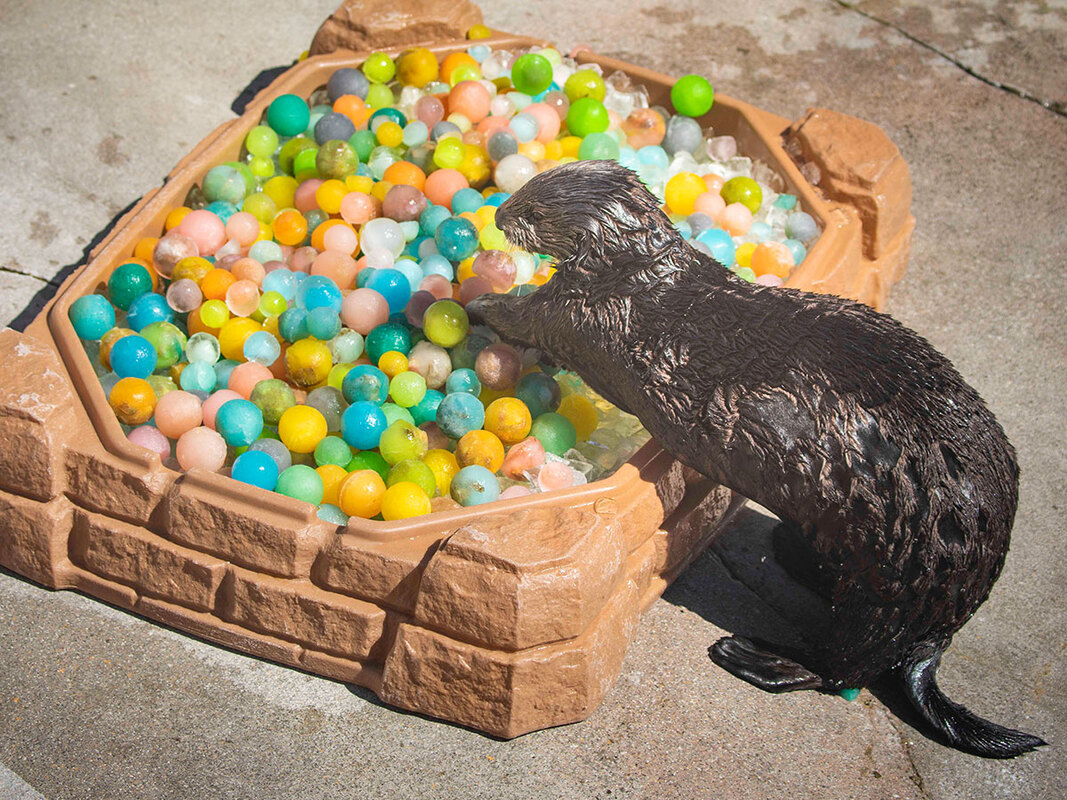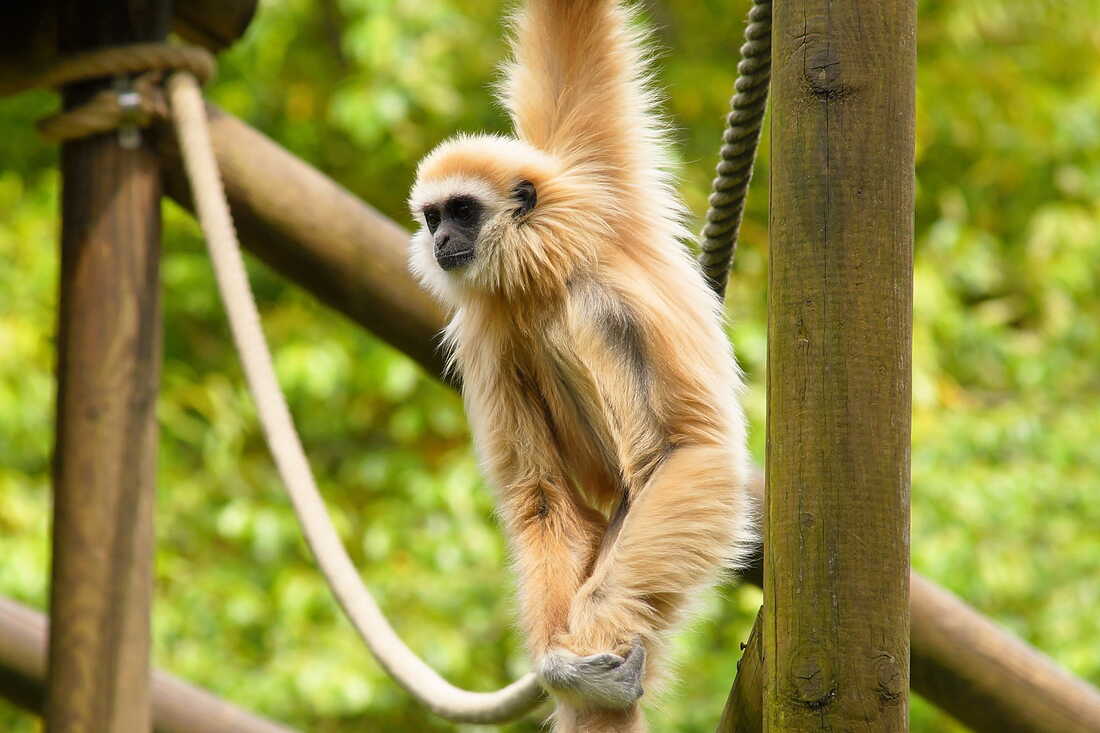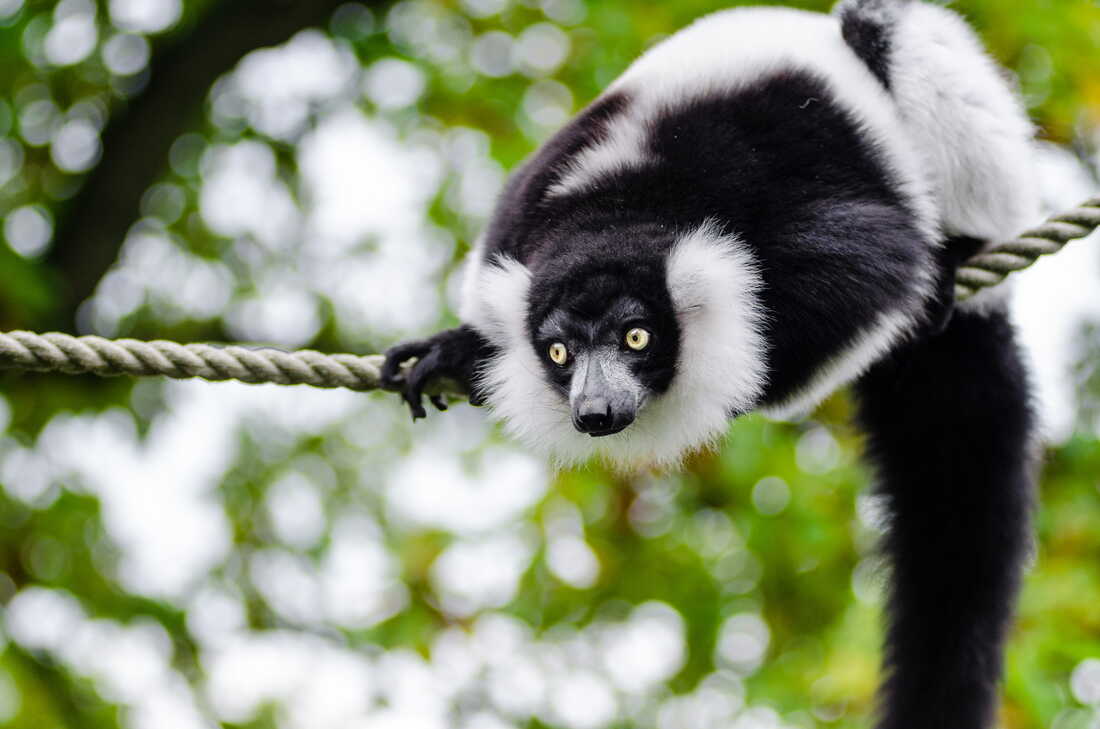By Lauren KoenigIf you’ve recently been to the zoo, you might have noticed a few seasonal changes, like otters playing with popsicles or pumas clawing at cardboard. Don’t worry, zookeepers haven't gone mad from the winter blues - animals receive tricks and treats all year round in the form of environmental enrichment. A sea otter sorts through ice balls containing shrimp, clam juice, and water (photo by Monterey Bay Aquarium) Enhancing an animal’s environment to induce behavioral decisions and species-specific behavior is a direct means of promoting psychological and physiological health, according to the Association of Zoos and Aquariums. In combination with an animal’s particular diet, living space and veterinary care, enrichment acts as a tool to ensure that animals express the same behaviors in captivity as they would in the wild. So how does an animal caretaker design enrichment for animals at a zoo or aquarium? First, the keepers identify several aspects of an animal’s environment where modifications can be made and how they meet an animal’s social, cognitive, physical, sensory, and food requirements. Then, they design enrichment strategies to meet specific goals, such as enhancing an animal’s exploratory behavior or motivating them to use their auditory abilities more frequently. For example, adding swinging ropes to a lemur exhibit encourages lemurs to use the same climbing muscles and jumping behaviors that wild lemurs employ to survive in the forests of Madagascar. Keepers will go one step further and change the locations of the ropes throughout the year, providing a variable and unpredictable environment to stimulate their curiosity, challenge their problem-solving skills, and prevent boredom or frustration. Presenting food in different forms or hidden inside unusual containers can encourage other natural investigative and foraging behaviors. Many of these exhibit additions might not appear exciting to the casual observer, but new scents in the form of fur or bark from another animal’s exhibit are especially enticing for olfaction-dependent hunters like bears and lynx. Permanent fixtures like pools and mud holes offer animals a place to swim, play, and cool off on a hot, sunny day. A gibbon (left) and a ruffed lemur (right) use ropes to travel around their zoo exhibits, similar to swinging on trees and vines in the wild (photo credit pxfuel, CC license) Enrichment was a concept first proposed within the context of animal welfare as early as the 1920s. Animal scientists further developed enrichment methods primarily for producing higher quality poultry and livestock. Only within the last thirty years, however, has it become such a purposeful part of exhibit design. Exhibits that mimic the animals’ native habitat, known as naturalistic exhibits, have been shown to improve visitors’ knowledge and attitudes towards conservation. For example, a 2014 study compared people’s responses after visiting an older exhibit and a newly renovated building that houses great apes at the Lincoln Park Zoo in Chicago. The authors found that visitors to the naturalistic exhibit left the zoo with “reduced utilitarian attitudes” and a greater concern for the status of chimpanzees in both nature and in zoos. The plethora of user-submitted zoo animal videos on Youtube only further demonstrates how people connect with other species by seeing them enjoy many of the same activities that humans, or their pets, enjoy at home. While zookeepers can arrange enrichment objects and puzzles in an exhibit, animals are not always motivated to use them independently. Training, however, can help create a more stimulating environment by giving animals opportunities to make decisions and experience consequences related to those decisions. This form of enrichment, compared to occupational therapy, essentially serves as a replacement for the decisions required to survive in the wild, allowing animals to work for their food – a choice that they often prefer even when food is available for free. Moreover, training animals to undergo voluntary, reward-based practice for medical or husbandry procedures prevents high stress levels during actual medical emergencies. Preparation for these circumstances often reduces the need to use tranquilizers that would ordinarily be used to facilitate safe interactions between animals and veterinarians during up-close exams and treatment. Through environmental and behavioral enrichment, zoos that prioritize animal welfare give animals more options for how they spend their time, allowing them to feel more in control over their surroundings. These opportunities result in animals experiencing less stress, aggression, and fear, leaving room for them to express their natural behavioral repertoire. As an added bonus, zoo visitors (like you!) benefit from more educational and interpretative experiences at the zoo by watching them behave just like they do in the wildlife documentaries you can view at home. So the next time you’re at the zoo or the aquarium, see if you can spot the enrichment in animals’ habitats and how their caretakers are helping them to thrive. About the Author
0 Comments
Your comment will be posted after it is approved.
Leave a Reply. |
LIFESTYLE BLOGRead our lifestyle advice, written exclusively for pre-professional women in science and engineering. From advice about fashion, work and family balance, self, wellness, and money, we've got you covered! |
The Scientista Foundation, Inc. All Rights Reserved © 2011-2021 | Based in NY | [email protected]
The Network for Pre-Professional Women in Science and Engineering
The Scientista Foundation is a registered 501(c)(3) -- Donate!
The Network for Pre-Professional Women in Science and Engineering
The Scientista Foundation is a registered 501(c)(3) -- Donate!




